Australian Tropical Rainforest Plants - Online edition
Corypha utan Lam.
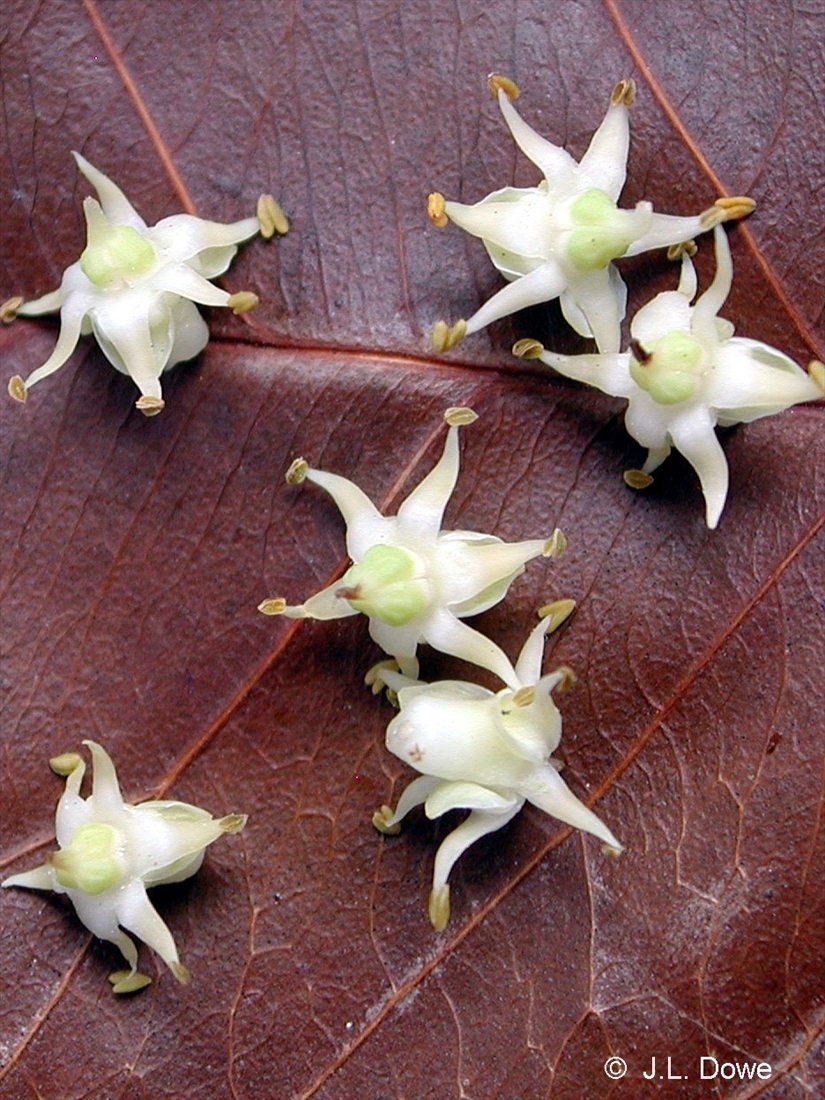
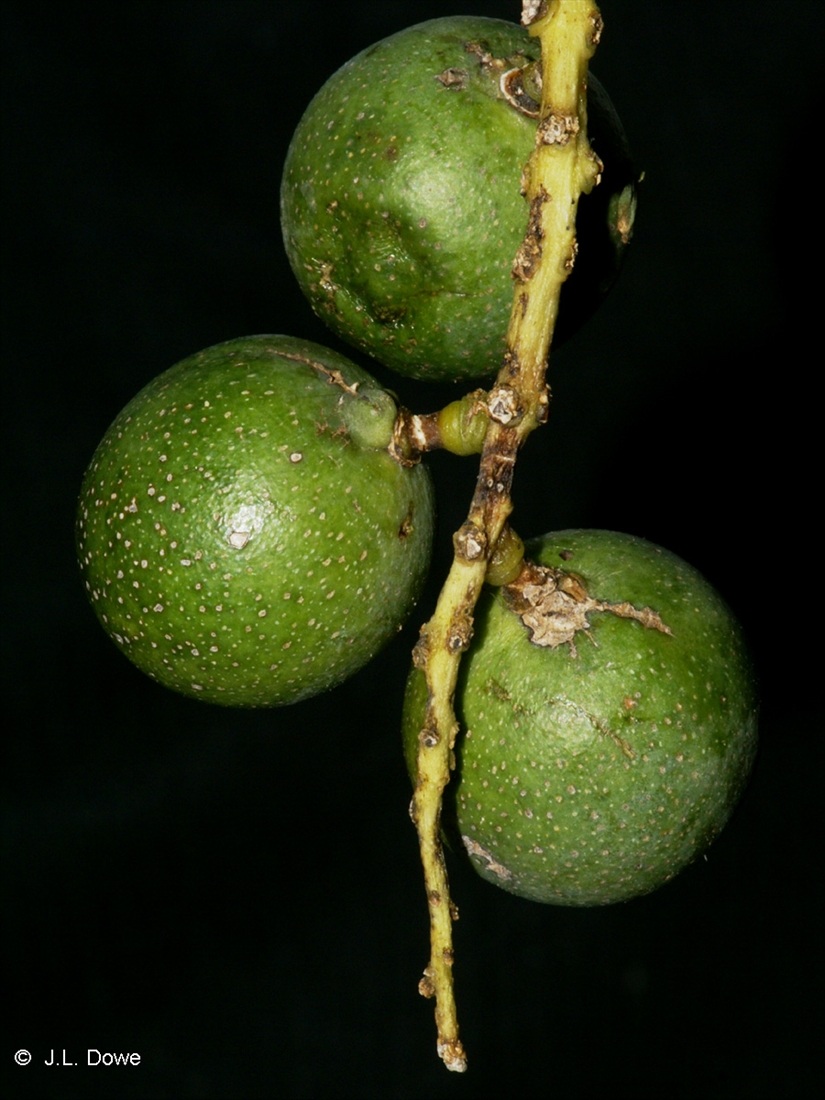
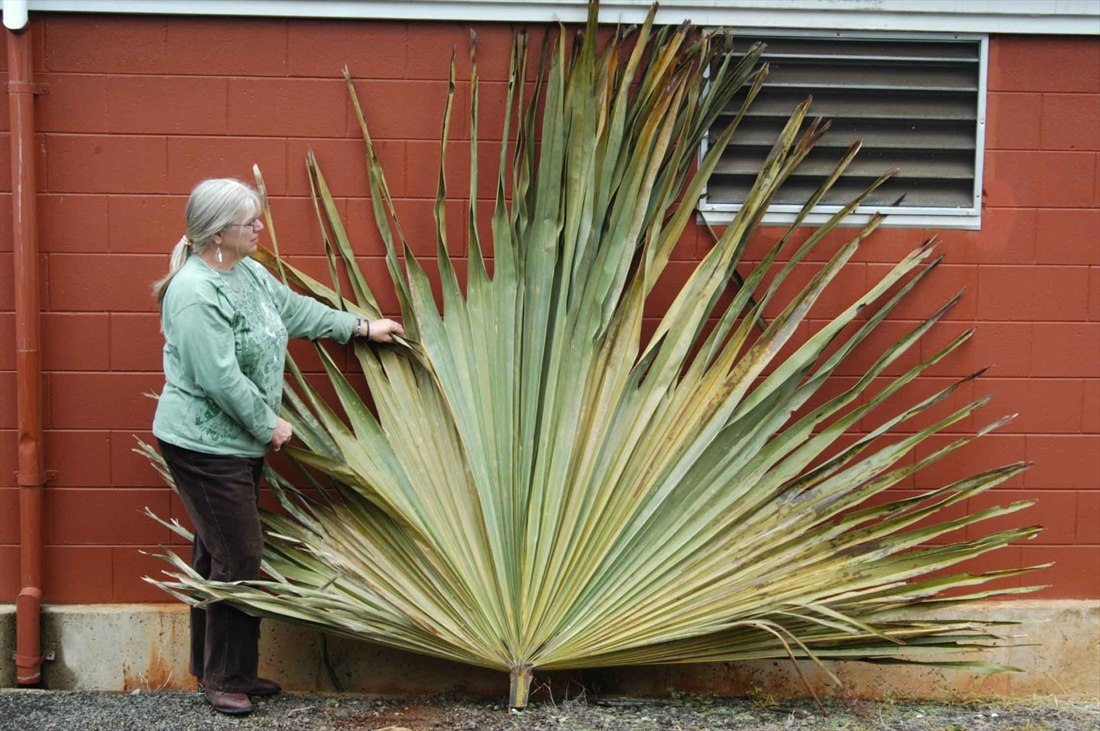

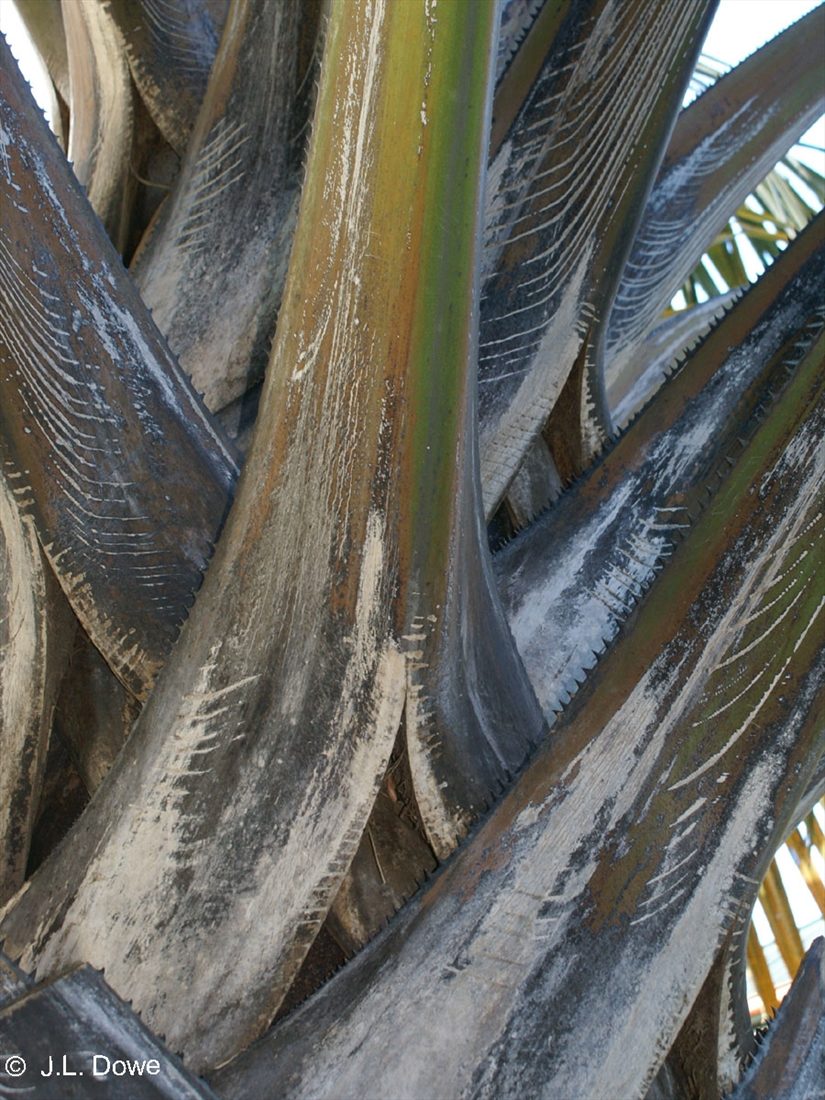
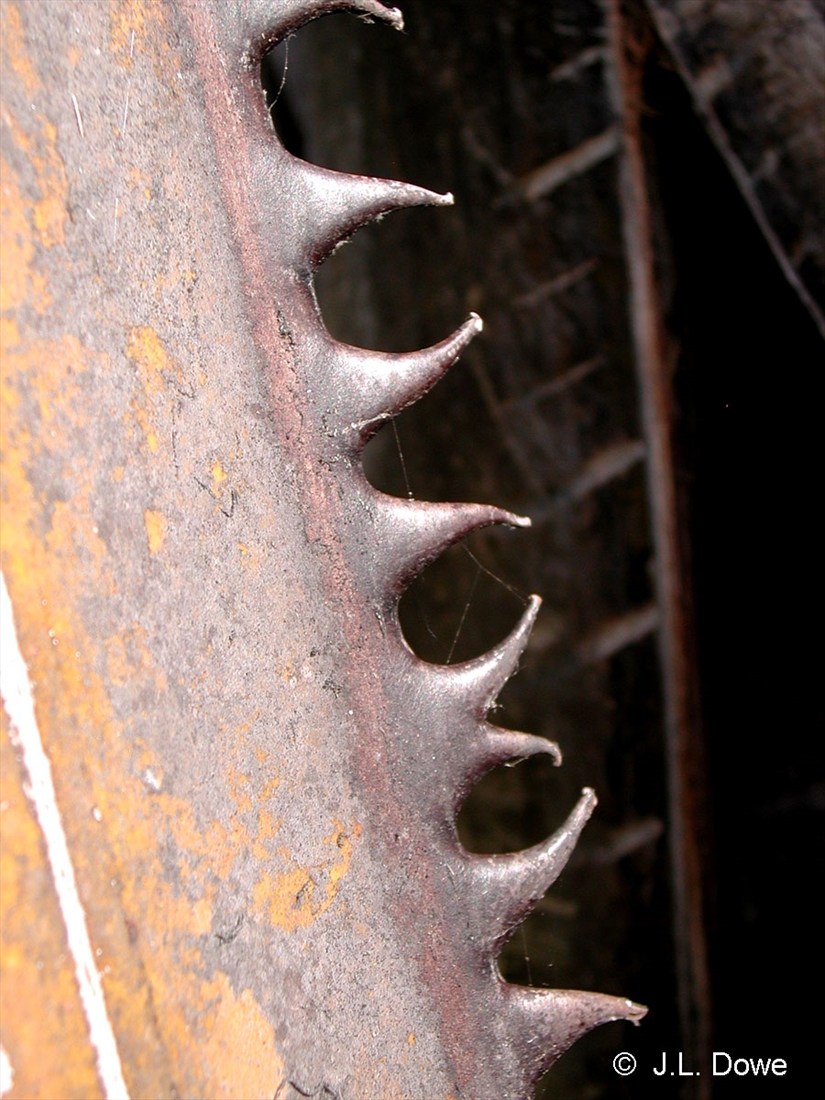
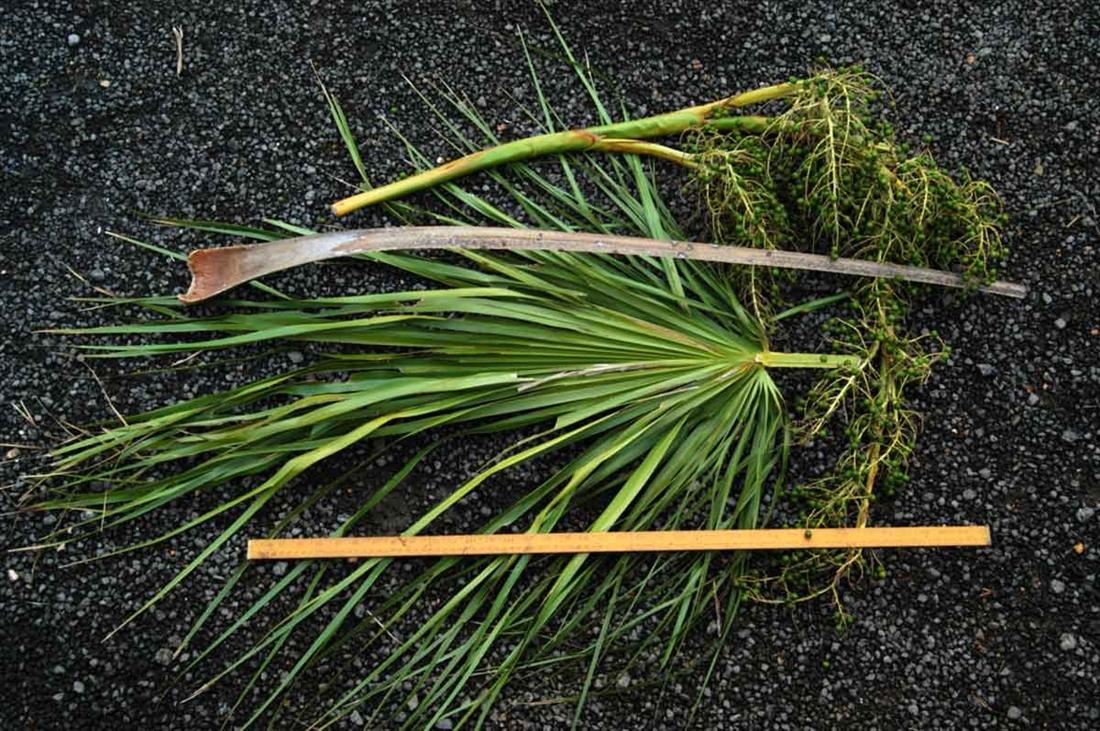
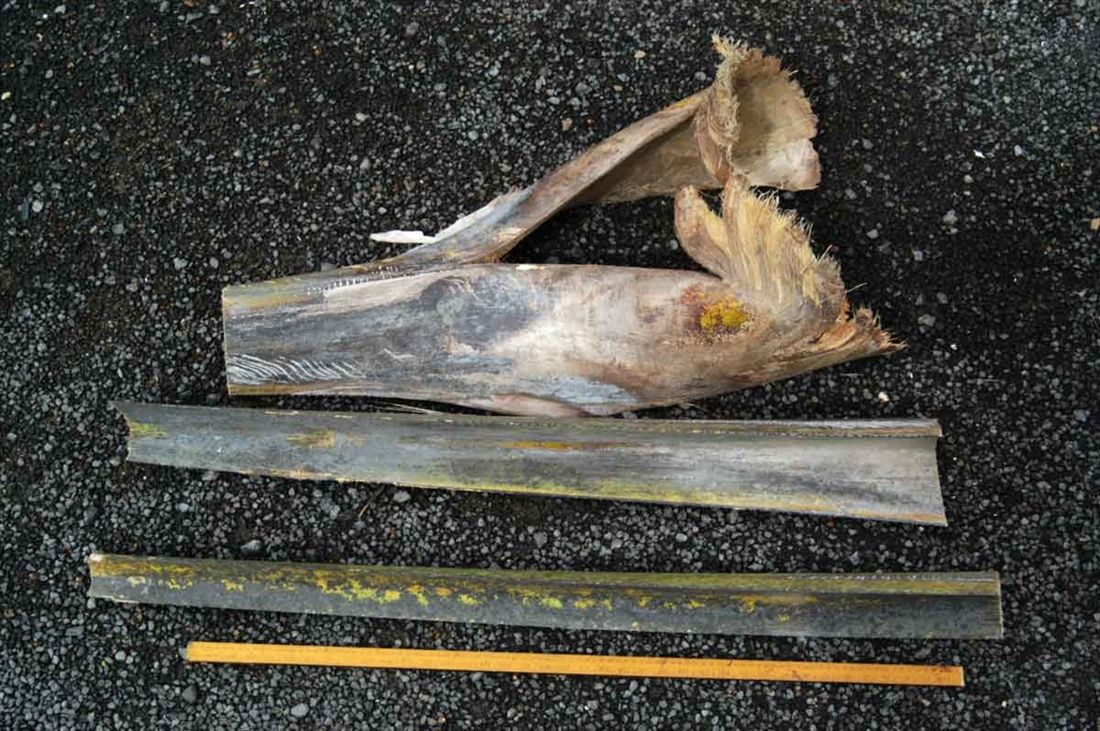
Lamarck, J.B.A.P.M.de (1786) Encyclopedie methodique ii: 131.
Kennedy Palm; Gebang Palm
Single stem 12-20 m tall, 60-100 cm DBH; grey and covered in persistent leaf bases in the upper part in a typical spiral pattern.
No crownshaft. Leaves palmate, pleated, 4-6 m long, lamina 2.36-3.0 m wide and divided into 80-100 very deep segments, 160 x 8 cm, greyish green to blueish green tapering to a short, forked, pointed apex, each lobe with a single midrib; ligule 1.5-2 cm above apex of the petiole; petiole 2-4 m long, channelled above with black margins and armed for the entire length with 0.3-2 cm long straight, stout spines.
Inflorescence a terminal panicle 2-5 m tall with up to 1 million yellowish to white bisexual flowers with an unpleasant odour. Flowers 3-8 mm diameter with 3 sepals and 3 petals in clusters of 5-10 in regular spirals along the 15-40 cm long branchlets of the inflorescence. Plants flower only after 30-60 years and then die (monocarpic).
Olive green to brownish, globu;lar, 15-30 mm diameter. Takes ca. 18 months to ripen. Seed spherical and 12-20 mm diameter.
Features not available.
The sugary sap, obtained by tappings from the palm top and inflorescences, is made into wine, sugar, alcohol, or vinegar. The adult leaves are used for roof thatching, manufacturing of mats and umbrellas, especially the midribs of the leaves for furniture making and constructions of interior house walls. The fibres or cutted strips, obtained from the young unfolded leaves are used in the manufacture of nets, bags, mats, sails, baskets, string, ropes, hats, cloth, and fancy articles. The terminal bud is eaten as a vegetable (palm cabbage). The young cooked fruits are consumed as sweetmeats. The hard seeds are made into rosaries, necklaces and buttons. In times of scarcity starch is extracted from the stem (Johnson et al. 1991).





